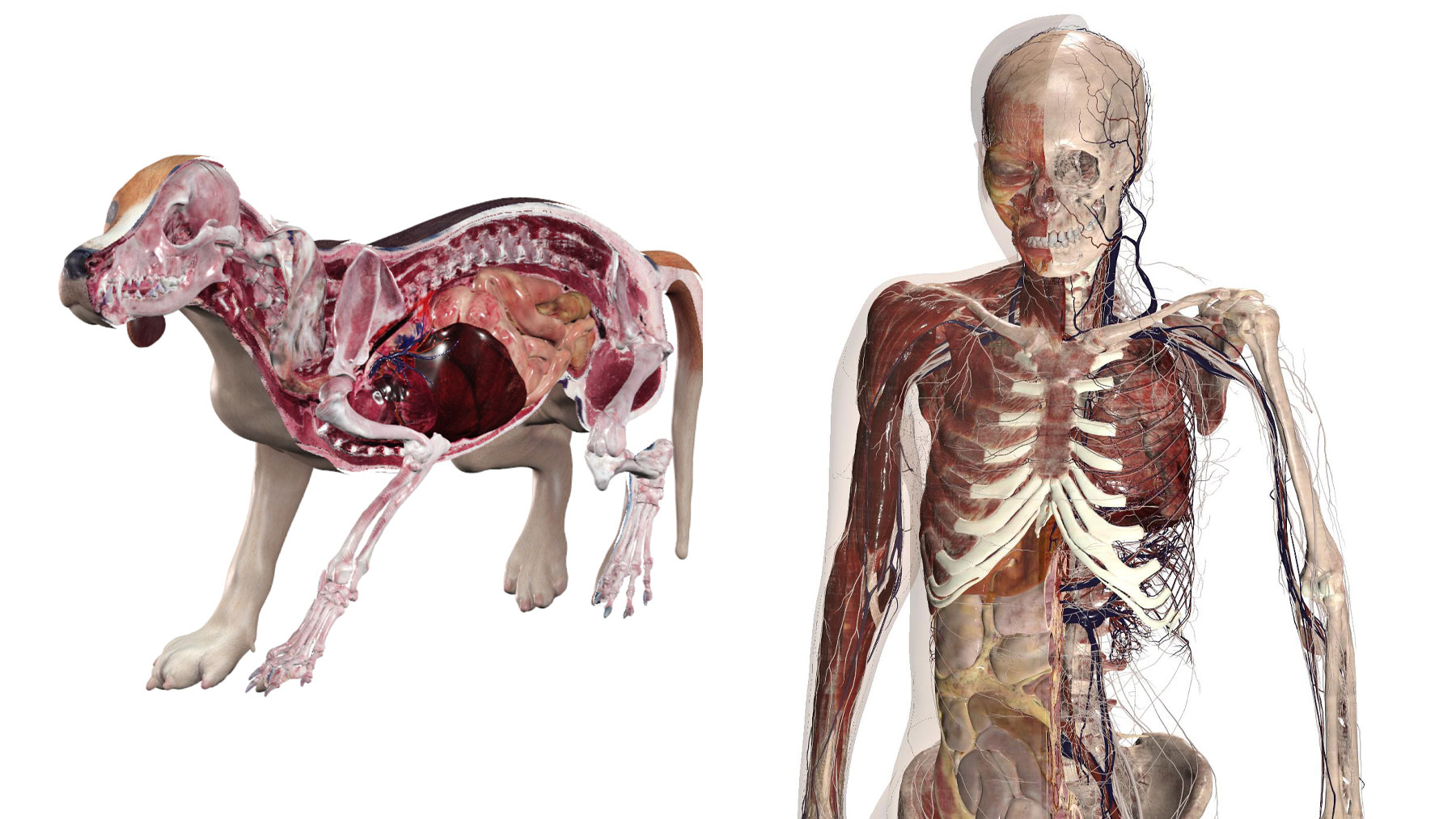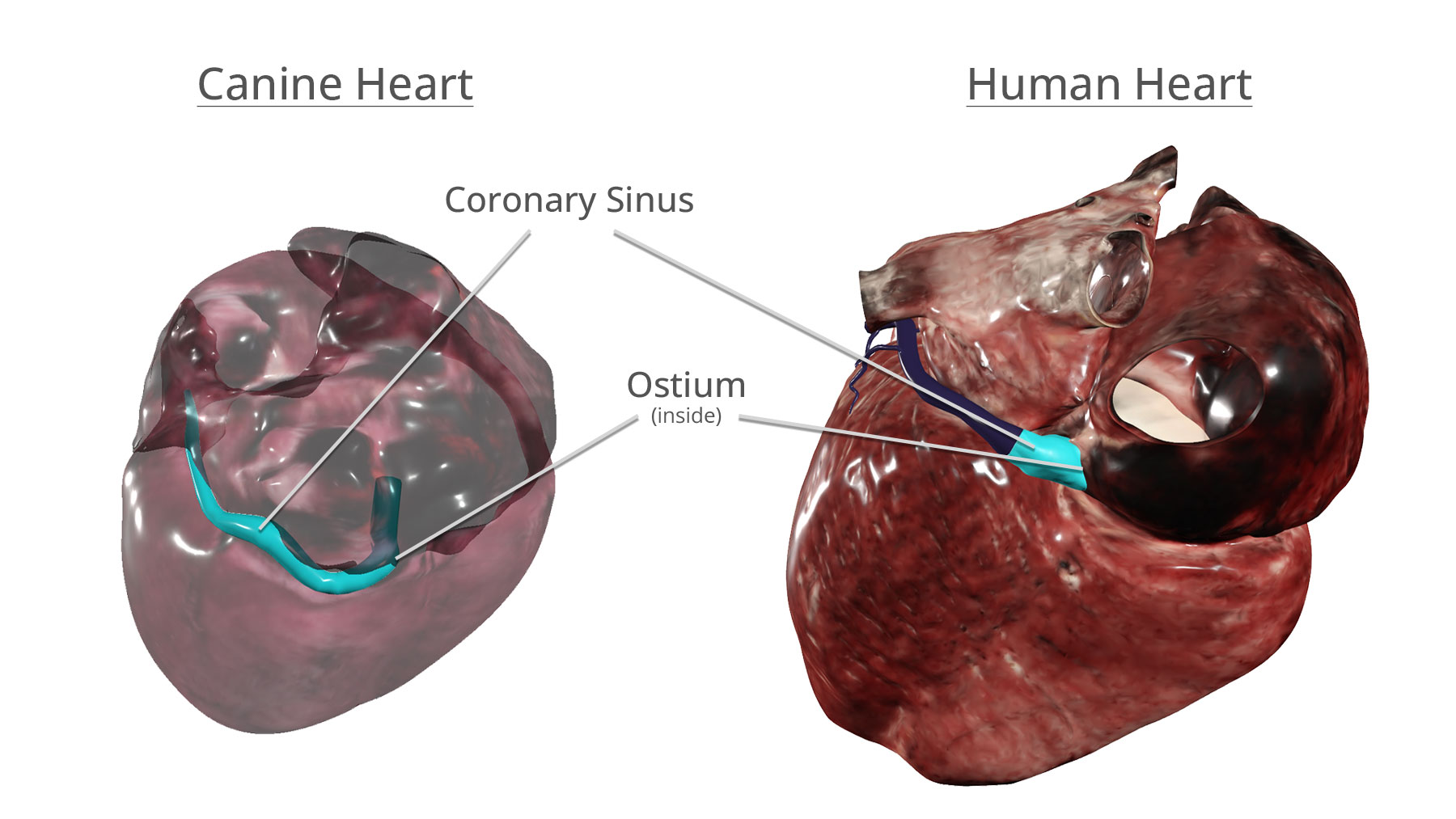Despite being different species, dogs share many anatomical similarities with humans. In fact, the differences between the canine and human cardiovascular systems are relatively subtle.

However, there are clinical differences between cardiovascular diseases in dogs and humans.
In humans, one of the most common heart diseases is coronary artery disease. It’s a condition in which coronary arteries fail to supply enough blood and oxygen to the heart due to cholesterol deposits built up in the wall of the arteries. Meanwhile, in dogs, mitral valve disease (a condition in which valves of left heart chambers can’t close fully) and dilated cardiomyopathy (when the heart can’t pump blood efficiently) are the most common diseases.

Despite the differences, scientists find that the change in heartbeats during canine breathing (inhalation and exhalation) doesn’t affect their life quality or expectancy.

Using Anatomage’s software, anatomical differences between the canine and human heart can be examined through 3D visualization.
For more information about the digital canine body, check out the Anatomage Table Vet.